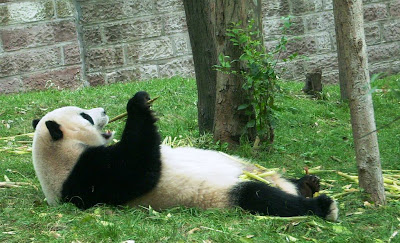
Besides the basic massages, there are more elaborate ones to be had - foot massage is one of the most popular kinds. The foot massage places are more spa-like and usually have a large foot sign. Today a friend talked me into going for my first foot massage.
(I innocently asked to use the washroom when we arrived, but the light in their windowless facilities was not working. They ended up handing me a long, lit candle to use. There was no place in the bathroom to set the candle, so I managed to manouver my way through things, using the eastern style toilet and holding a candle in one hand and paper in the other. Now I think maybe I just should have just used the washroom with the door wide open - they were a little 'buhaoyisi' (embarrassed) about it. There were both men and women there, btw.)
The massage was very nice - you could tell they were paying proficient attention to both location and amount of pressure. We chatted with the women who worked on us, and found out they studied for three years to do the work but it was pretty tiring. They work on three or four people a day. One hour of foot massage, plus nice twinges for the rest of the day, was 40 RMB (not quite six bucks).













